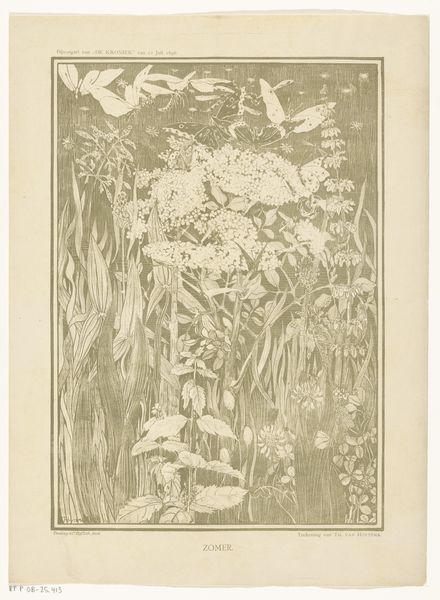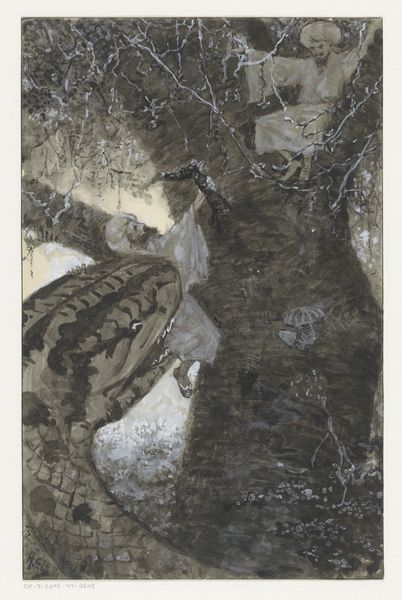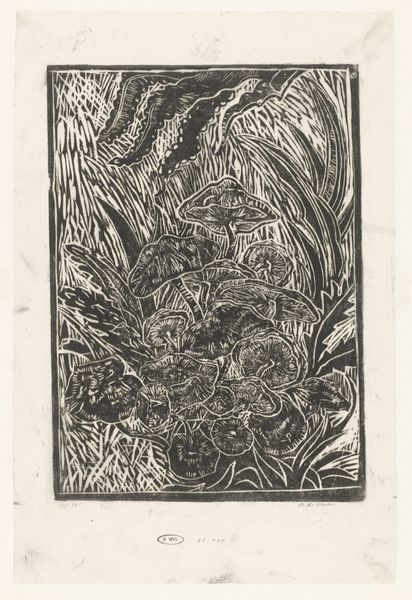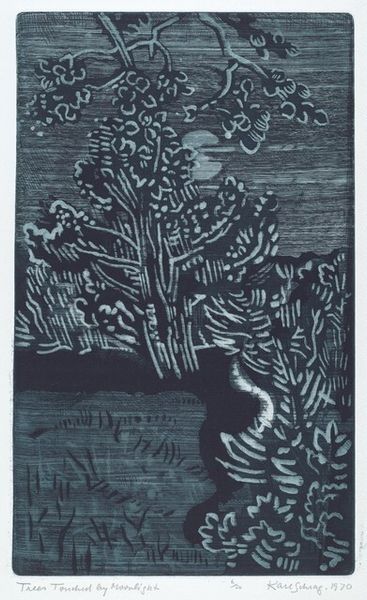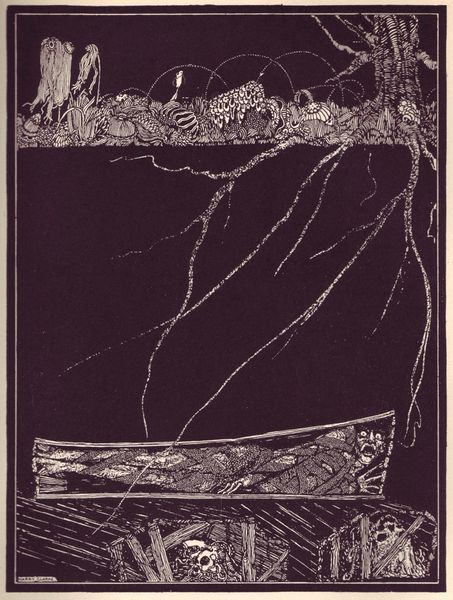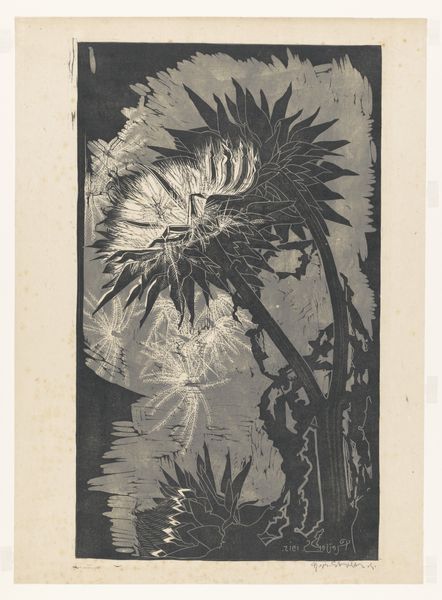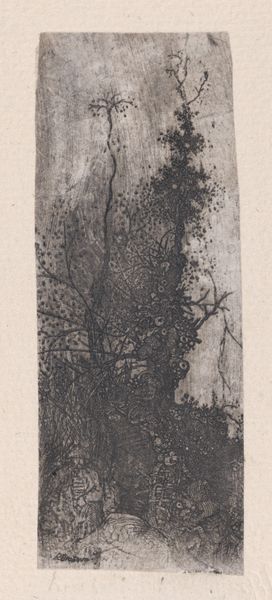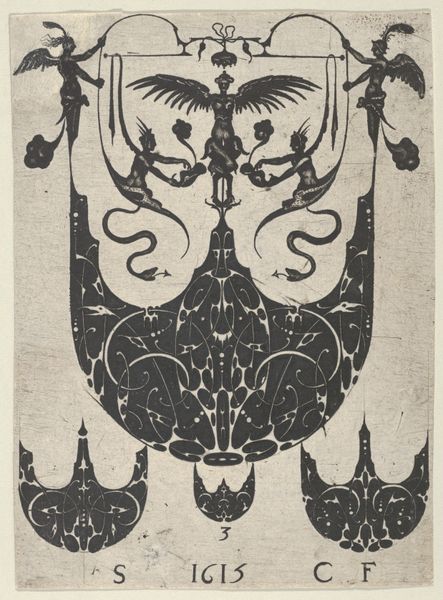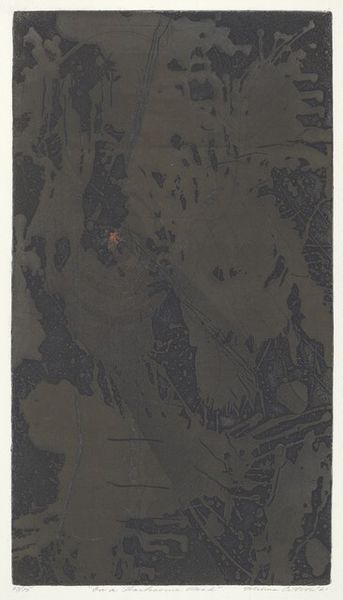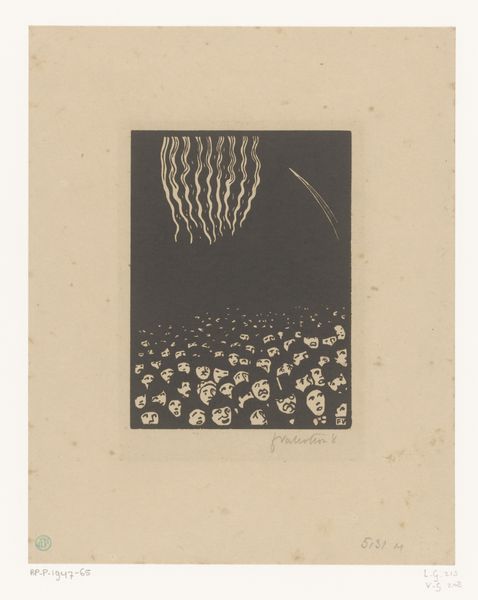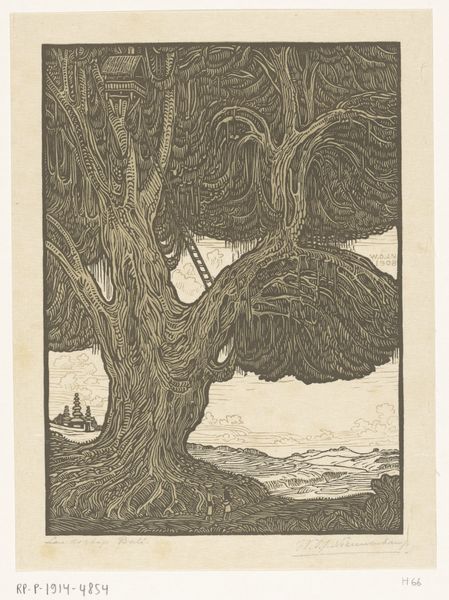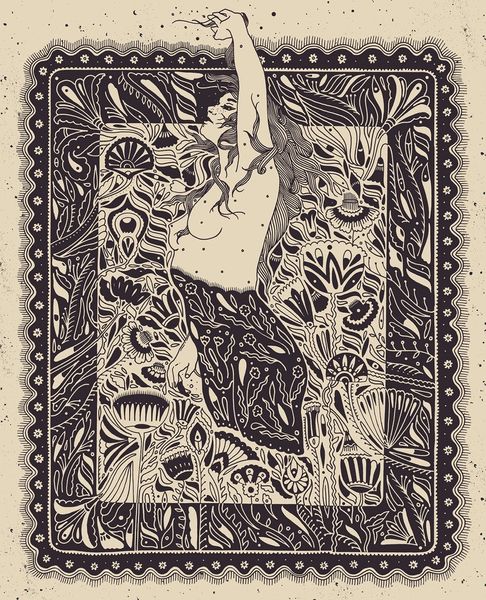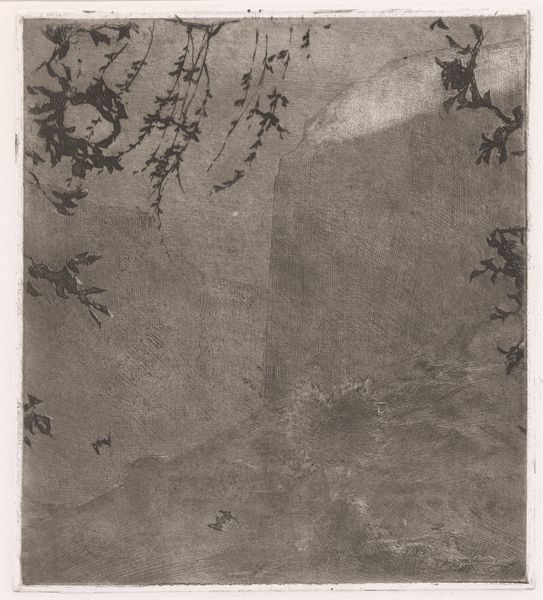
drawing, graphic-art, print, woodcut
#
drawing
#
graphic-art
#
organic
# print
#
landscape
#
figuration
#
organic pattern
#
woodcut
#
symbolism
#
earthenware
Dimensions: height 207 mm, width 145 mm
Copyright: Rijks Museum: Open Domain
Curator: Welcome. Before us is "Zwemmende kikker," or "Swimming Frog," a woodcut created by Julie de Graag between 1887 and 1924. Editor: It strikes me immediately as rather somber, almost mystical. The composition is dominated by deep blacks and muted greens, evoking a sense of watery depths and hidden worlds. Curator: Precisely. De Graag's handling of the woodcut medium is quite masterful. Observe the contrast between the bold, graphic shapes of the frog and the more delicate lines suggesting water plants and reflections. The structure creates a captivating play between positive and negative space. Editor: Indeed. Frogs, of course, are potent symbols. They're amphibians, creatures of transition, moving between water and land, symbolizing transformation and adaptability in many cultures. Note how de Graag captures this liminal state. Curator: An astute observation. Furthermore, consider the artistic currents of the period. The emphasis on simplified forms, combined with natural motifs, resonates with the aesthetics of Symbolism and early Modernism. The work rejects naturalistic representation, embracing abstraction and stylization. Editor: The sprinkling of white dots—air bubbles, perhaps, or even stars—adds a dreamlike quality. It pulls the viewer into the frog's environment, prompting contemplation of the unseen. I also think that frog has been mythologized for ages—as oracles of coming rains or the natural forces, and in other tales they are linked to fertility or witchcraft. Curator: All layered into a simple image, made using a simple technique. Looking again at this composition I'm drawn to consider the frog in its watery realm. It brings a modern touch with it's flattened picture plane, combined with art nouveau's appreciation for natural beauty, creating a very intriguing pictorial tension. Editor: Ultimately, this deceptively simple image allows a symbolic resonance which taps into centuries of human imagination of metamorphosis in ways that seem both playful and mysterious, all at once. Curator: A truly unique piece that rewards slow, deliberate observation.
Comments
No comments
Be the first to comment and join the conversation on the ultimate creative platform.
